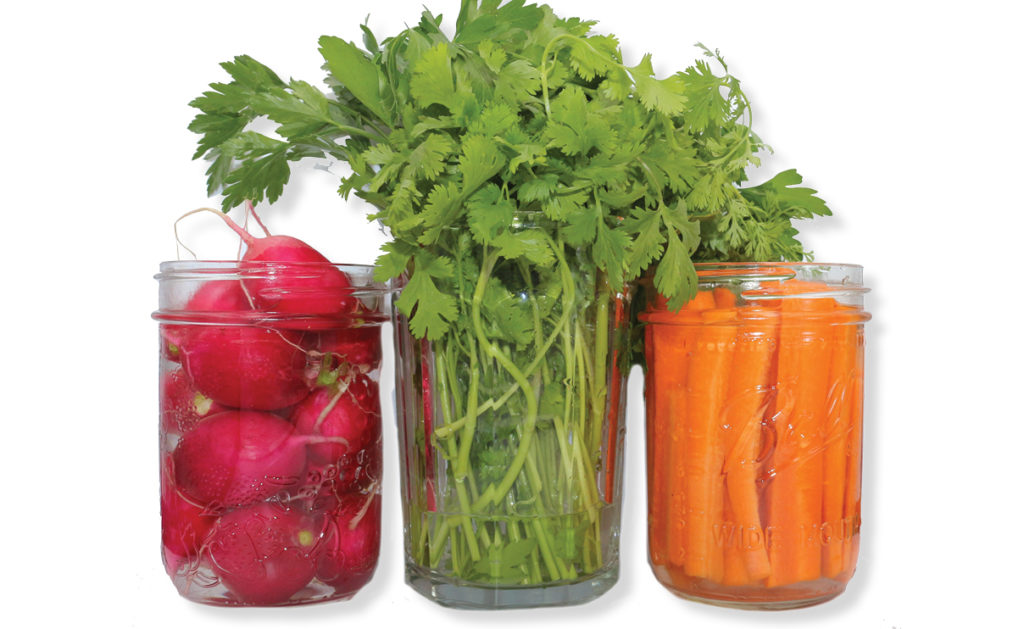by Tina Kelly –
Food waste — a constant battle. But I’m finally feeling the air of victory; it only took a pandemic.
Working from home this spring set me up for success. No more two-hour transit commute, no more caving to cravings and popping into the store after work and B.C.’s top doctor recommended limiting outings even for essentials. Groceries needed to last.
On average, Canadian households waste 140kg or $1,100 worth of food annually. With the world in turmoil and heightened financial awareness, there is also monetary incentive to use up groceries. Aside from wastage affecting my bank account, there are also negative environmental impacts. Rotting food releases greenhouse gases as does the transportation to get food to us. And I won’t even mention the resources used to grow, process and package food!
In the last four months, my single wasted item was one $0.99 bunch of cilantro that rotted quicker than it should have. The following tricks have helped me accomplish my food waste reduction goals:
Take stock. Before shopping, note your inventory of what needs to be used up, then shop for other items to help you do that.
Be realistic/buy less. Avoid waste by not buying it in the first place. Glance at the week ahead and buy only what you need. Skip the urge to buy perishables on sale unless you are certain you can use them up. It’s not a savings if you eventually throw it out.
Stock up. It’s okay to stock up on non-perishable staples – spices, grains, noodles, beans. You’ll have more to work with when trying to use up fresh food.
Prep. Take time to organize perishables. Cooking after a busy day is easier when some of the prep work is already done. Greens last for weeks if washed and stored in a salad spinner in the fridge and carrots won’t be rubbery if cut into sticks and stored in water. Having ready-to-go healthy snacks is great too!
Placement matters. Know where in the fridge different foods do best. Fruits and vegetables last longer under specific conditions, so use the drawer with the correct humidity level.
Get creative. Try a new recipe or make one up with what you have. I call the latter “pantry cuisine;” a friend prefers a more adventurous title – “treasure hunt.”
Store in water. Herbs are one item I stand in a glass of water (after trimming the stem ends). Limp herbs and veggies – i.e. celery, kale – can be revived by standing them in cold water.
Utilize the freezer. The realization that my pot of leftovers cannot be finished along with my other fresh food results in a freezer full of healthy, handy meals for when life gets busy. (Just remember to label containers; I once accidentally took pasta sauce for lunch instead of chili.) Containers in my freezer hold veggie scraps to make broth and salvaged fruit for smoothies. The remainder of open cans of coconut milk or tomato sauce are frozen in jars, sometimes in measured quantities for specific recipes.
Substitute. Before buying a recipe ingredient you may only use a portion of, Google possible substitutions. Need buttermilk? Milk with vinegar will do.
Compost. If you stumble and must dispose of food, use your backyard compost or curbside kitchen scrap program.
Reflect. What can I do differently next time to avoid wasting X?
I may be back to the workplace, but I’m still limiting my shopping so these strategies are sticking. Reducing wastage for the win! My wallet wins and the environment wins.
For an additional resource, visit www.lovefoodhatewaste.ca.
Photo by Tina Kelly




